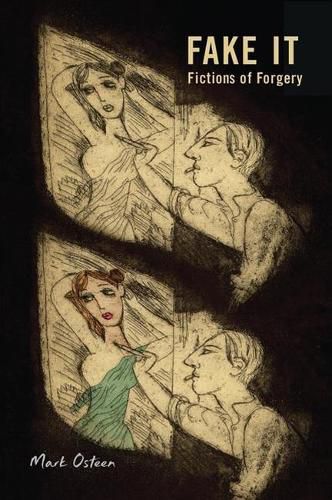Readings Newsletter
Become a Readings Member to make your shopping experience even easier.
Sign in or sign up for free!
You’re not far away from qualifying for FREE standard shipping within Australia
You’ve qualified for FREE standard shipping within Australia
The cart is loading…






How many layers of artifice can one artwork contain? How does forgery unsettle our notions of originality and creativity? Looking at both the literary and art worlds, Fake It investigates a set of fictional forgeries and hoaxes alongside their real-life inspirations and parallels. Mark Osteen shows how any forgery or hoax is only as good as its authenticating story-and demonstrates how forgeries foster fresh authorial identities while being deeply intertextual and frequently quite original.
From fakes of the late eighteenth century, such as Thomas Chatterton’s Rowley poems and the notorious Shakespearean documents fabricated by William-Henry Ireland, to hoaxes of the modern period, such as Clifford Irving’s fake autobiography of Howard Hughes, the infamous Ern Malley forgeries, and the audacious authorial masquerades of Percival Everett, Osteen lays bare provocative truths about the conflicts between aesthetic and economic value. In doing so he illuminates the process of artistic creation, which emerges as collaborative and imitative rather than individual and inspired, revealing that authorship is, to some degree, always forged.
$9.00 standard shipping within Australia
FREE standard shipping within Australia for orders over $100.00
Express & International shipping calculated at checkout
How many layers of artifice can one artwork contain? How does forgery unsettle our notions of originality and creativity? Looking at both the literary and art worlds, Fake It investigates a set of fictional forgeries and hoaxes alongside their real-life inspirations and parallels. Mark Osteen shows how any forgery or hoax is only as good as its authenticating story-and demonstrates how forgeries foster fresh authorial identities while being deeply intertextual and frequently quite original.
From fakes of the late eighteenth century, such as Thomas Chatterton’s Rowley poems and the notorious Shakespearean documents fabricated by William-Henry Ireland, to hoaxes of the modern period, such as Clifford Irving’s fake autobiography of Howard Hughes, the infamous Ern Malley forgeries, and the audacious authorial masquerades of Percival Everett, Osteen lays bare provocative truths about the conflicts between aesthetic and economic value. In doing so he illuminates the process of artistic creation, which emerges as collaborative and imitative rather than individual and inspired, revealing that authorship is, to some degree, always forged.